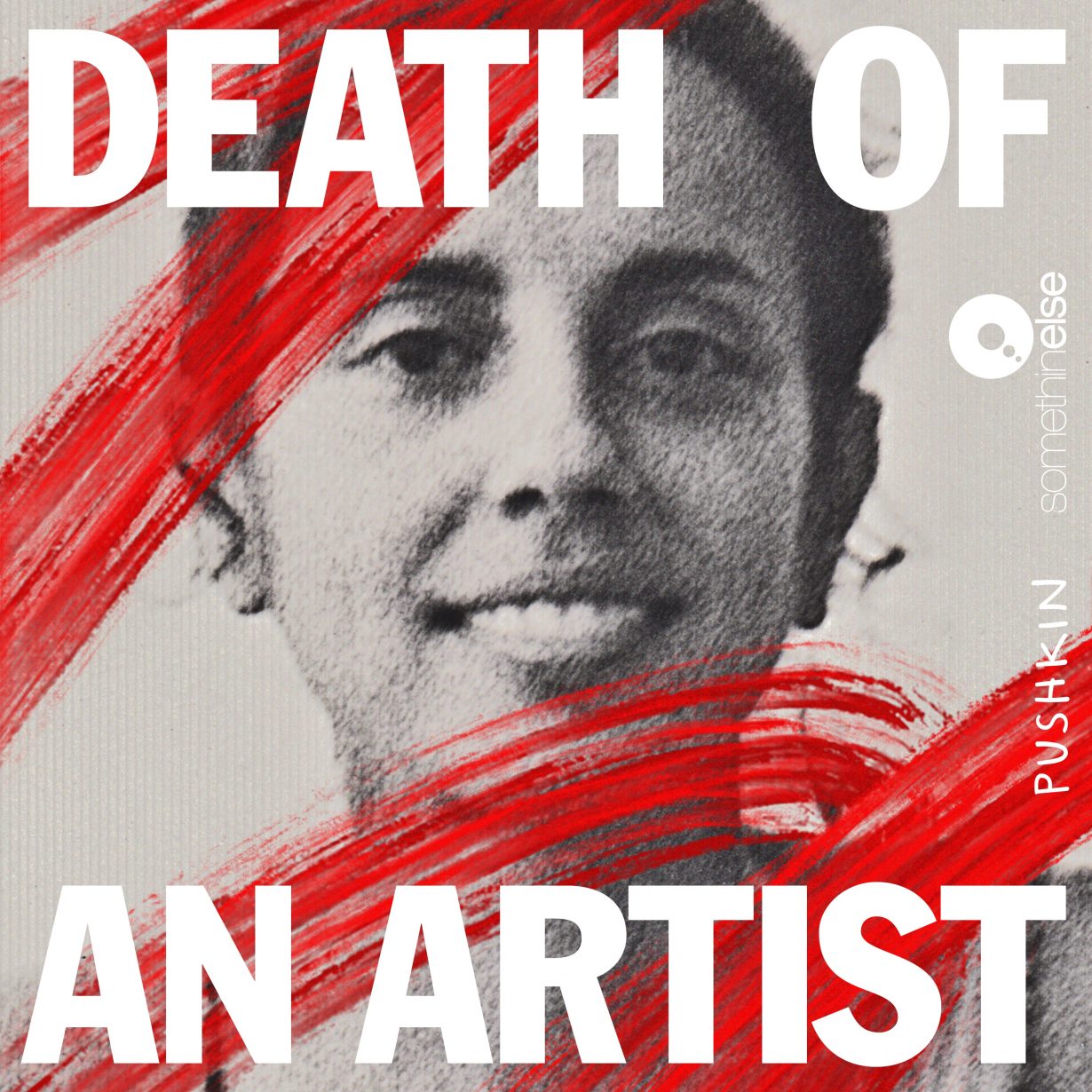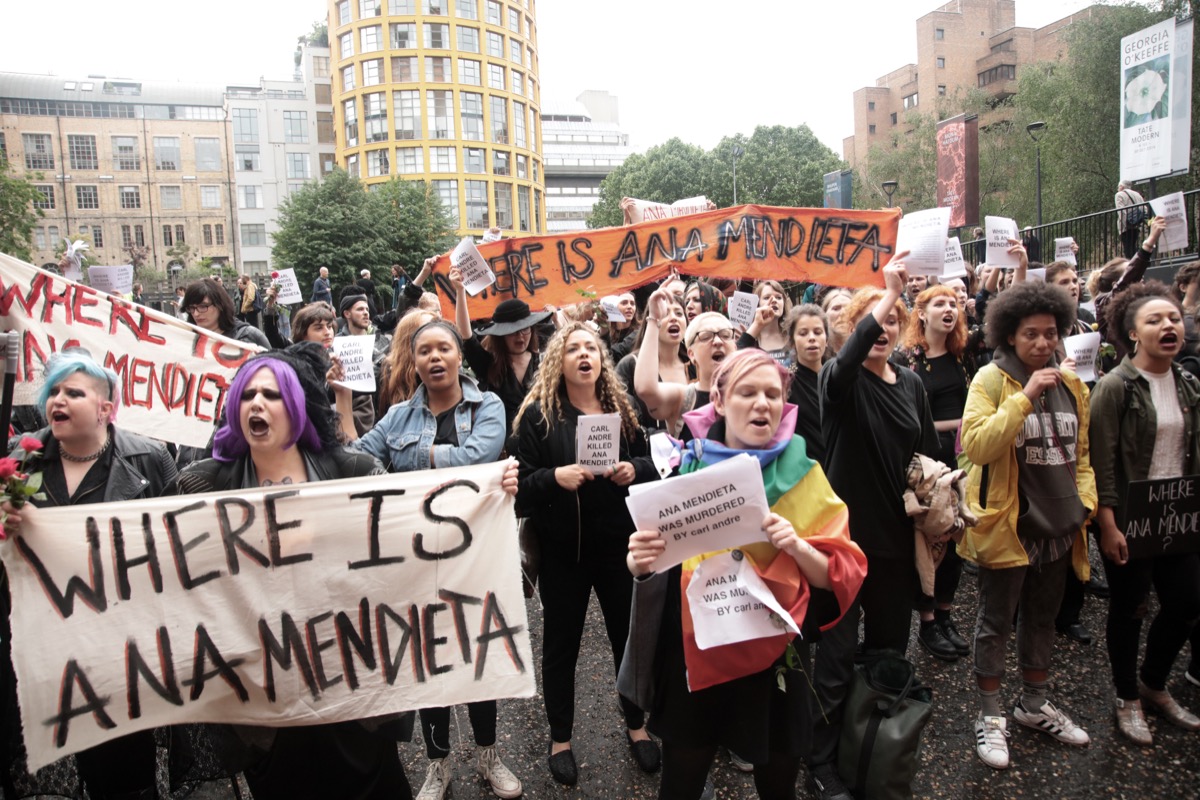Death of an Artist cannot seem to move beyond treating the past as a theatre of trauma
This September saw the release of Sony-backed podcast Death of an Artist, in which curator Helen Molesworth wheels the tale of artists Ana Mendieta and Carl Andre’s doomed marriage out for another spin. This time, Mendieta’s death, in 1985, and Andre’s possible involvement (Andre was cleared of her murder in 1988, though many still consider him guilty), is given the true-crime treatment.
Over the course of six episodes Molesworth frames herself as a woman on a mission to break the oppressive silence around Andre’s suspected role in Mendieta’s death – no matter the professional cost. While dredging through what are in fact the now-familiar details of the trial and its aftermath, she describes her own political awakening. In the wake of #MeToo and BLM, the former Andre fangirl, who recalls percolating with joy at the sight of his bricks and floor tiles in her youth – “father of minimalism” and “genius” are terms used – learns to curb her enthusiasm for a man accused of murdering his wife, a Cuban refugee, by throwing her out the window.
Death of an Artist makes for a predictable, if unintentional, portrait of an art establishment in the midst of a protracted identity crisis – rejecting the canon it worked to secure, and publicly pledging allegiance to a new doctrine in which, as Molesworth says, “identity matters”. Yet while the podcast is framed as a quest for justice in Mendieta’s name, in reality it is a lazy rehashing of a grim episode underpinned by a dubious relationship to the ethics it supposedly upholds.
The silence that Molesworth says inspired her to action is by now a fallacy. You would be hard pressed to find an art student today who doesn’t think of Mendieta and her death when Andre’s name is mentioned, or vice versa. Over the past 37 years countless articles have been written, books published, academic theses submitted, protests at the display of Andre’s work mounted. A popular, macabre folklore has emerged – one that Molesworth mines, indulging novelistic embellishments and hearsay. The podcast includes an often-repeated anecdote about the pictures at an exhibition falling off the walls when Andre and Mendieta first met, as if this was a sign of doom rather than an inadvisable choice of adhesive. A recording of Andre saying he is no longer able to lift heavy loads while making his work – an innocuous and rather dull reflection on ageing – is used to invoke the image of him throwing Mendieta to her death. A woman who suffered a serious brain injury, and subsequently believed herself to be psychic, relays a premonition she had that Andre would kill Mendieta.
None of this, of course, is evidence, and most of it is far from new. Perhaps the extent to which this folklore has made Mendieta’s work synonymous with both Andre and her death is the reason her family and some friends declined to participate in the podcast. The majority of the insightful material Molesworth uses – audio recordings of the couple’s acquaintances, including fellow artists Carol and Sol LeWitt, Frank Stella and Lawrence Weiner, speaking candidly about their reactions to Mendieta’s death – was collected by the writer Robert Katz during the late 1980s. Katz interviewed many people involved in the New York art scene while researching his book on Mendieta’s death, Naked by the Window (1990).

Perhaps it was also clear to those who declined to participate that turning Mendieta into true-crime fodder is a questionable way to remember the dead. True to form for the multitude of lacklustre podcasts hoping to emulate the success of Sarah Koenig’s wildly popular real-life murder mystery Serial (2014), episodes have cliff hangers, an archive of dodgy canned music has been raided – cue the ominous cello when Andre’s name is first mentioned – and Molesworth performs the obligatory role of maverick detective striking out against the establishment. Molesworth weaves in her own firing from MOCA Los Angeles in 2018, too – she signed an NDA so she can’t discuss what happened, but by introducing this event next to an interview with a curator who describes quitting her job because of institutional racism, it’s clear how she would like it be framed. (At the time, two narratives appeared regarding Molesworth’s dismissal: she was fired because she challenged the privileging of white male artists; she was fired
because, according to a report in Frieze, she made the working lives of her staff a ‘living hell’.) In the final episode she attempts to doorstep Andre, a charade of investigative journalism that begins and ends with handing a letter to the doorman of the building in which he lives. Unsurprisingly Andre does not reply. Nail-biting stuff.
By now, surely, another kind of conversation needs to be had. Mendieta’s death raises many unanswered questions that are worthy of more than self-serving and corny attention. What do we do when it is believed that a miscarriage of justice has taken place, one that belongs to a wider pattern? Should there be a change to the threshold for proving guilt? If so, what would be the ramifications of revising the premise of ‘beyond reasonable doubt’? When should the cultural sector step in, and if it does, who is assuming the authority to pass judgment? The same questions hang over the #MeToo movement, which has largely stalled at the point of recounting instances of abuse, first as testimony, then as vampiric cultural product that feeds on the spectacle of the cruelty it claims to uncover. (Marilyn Monroe’s treatment in the 2022 film Blonde, and Monica Lewinsky’s in the 2021 series Impeachment: American Crime Story, are but two examples. It would be no surprise to discover an Ana Mendieta biopic is in the works; by now the story writes itself.)
The dilemma of where we go from here will not be solved by reheating hearsay and role-playing detective. It requires a good-faith engagement with complex societal questions. By the end of the podcast, however, only two half-baked suggestions emerge. Molesworth expresses a wish that Andre, who is now eighty-seven and has been tight-lipped about Mendieta’s death, make a public statement acknowledging the harm caused. Yet short of him making a full confession, this would be highly unlikely to provide any kind of resolution. The many celebrity non-apologies that have circulated post-#MeToo have proven to be a chumming of the waters that largely serve the interests of the media machine. The second idea, originally proposed by the art group Guerrilla Girls, is that every time Andre’s work is shown it is accompanied by a caption declaring that he probably killed Mendieta. If this is to be seriously considered, there must also be a discussion of what precedent this would set for anyone accused or convicted of a crime, and whether those who are already disproportionately penalised by the judiciary system – or, indeed, feel themselves excluded from the art establishment – would be better or worse off as a result.
Death of an Artist has no interest in such discussions. Instead the podcast concludes by arguing that we can no longer afford to separate the art from the artist – a flaccid and largely irrelevant sentiment, given that biography plays so dominant a role in contemporary culture that it is hard to view an exhibition without being schooled in the details of an artist’s life. The challenge now – one that would require a genuine disruption of the status quo – is to move beyond treating the past as a theatre of trauma to repeat ad nauseam, and find ways to change the script.
